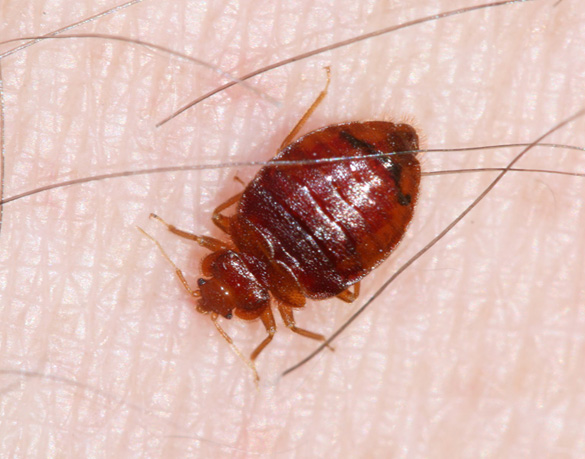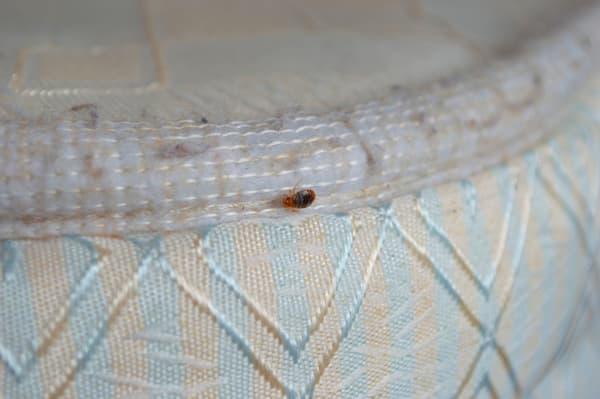Mastering Bed Pest Control: An In-depth Consider Examination and Treatment Methods
In the world of pest monitoring, few difficulties are as persistent and unsettling as bed bug invasions. The evasive nature of these small pests, combined with their capability to quickly increase and spread out, can make removing them a complicated task. Nonetheless, understanding bed pest control is not an insurmountable accomplishment. By carefully comprehending their habits, performing detailed assessments, determining key problem locations, carrying out customized treatment methods, and developing safety nets, it is possible to reclaim spaces from these unwelcome intruders. This detailed check out inspection and treatment methods uses a detailed overview to navigate the details of bed pest administration, clarifying effective methods that can aid in battling these durable opponents.
Comprehending Bed Bug Actions

Bed pests release aggregation scents, which attract others to cluster together in hiding places, helping in their reproduction and survival. This habits promotes the spread of invasions within a residential or commercial property and to surrounding systems. Bed bugs have revealed resistance to various pesticides, making eradication efforts a lot more intricate.

Performing Thorough Evaluations
Given the evasive nature of bed insects and their propensity to conceal in hard to reach areas, thorough examinations play an important function in detecting and resolving problems successfully. When carrying out assessments for bed pests, it is vital to be systematic and comprehensive. Beginning by examining areas where bed pests are known to conceal, such as cushion joints, box springs, bed frameworks, and head boards. In addition, check behind wallpaper, electrical outlets, and any kind of fractures or holes in wall surfaces and furniture. Bed pests are proficient at hiding themselves in little areas, so a thorough technique is critical.
Use tools like flashlights, magnifying glasses, and hole devices to help in the evaluation process. Seek indicators of bed insect activity, including dark areas (feces), shed skins, and actual pests. Bear in mind that not all indications may be noticeable to the naked eye, so an eager focus to detail is critical. It is also suggested to evaluate surrounding spaces or devices if bed insects are found, as infestations can promptly spread out (bed bug exterminator seattle topbedbugkillersofseattle). By performing complete assessments frequently, early discovery and efficient therapy of bed pests can be accomplished, minimizing the risk of an extensive infestation.
Identifying Key Problem Areas
To effectively fight bed bug problems, it is crucial to pinpoint key areas where these parasites are most likely to gather together and thrive. Bed bugs are nighttime pests that conceal in fractures and gaps throughout the day, coming out at night to feed on blood. Furthermore, upholstered furniture such as sofas and chairs, as well as curtains and carpet edges, are prime hiding places for bed pests.
Bed pests can additionally infest electric outlets, image frames, and even behind loosened wallpaper. Inspecting these vital locations extensively is essential for effective bed bug control. bed bug exterminator seattle topbedbugkillersofseattle. Early discovery and therapy in these invasion hotspots can protect against the spread of bed bugs to other components of the home and minimize the intensity of beetle pest control the invasion
Executing Effective Therapy Strategies
Upon determining vital invasion areas, the next critical step in combating bed pests is executing reliable treatment methods. Warmth treatment, which entails increasing the ravaged area right here to temperature levels deadly to bed bugs, is extremely reliable in eliminating bed bugs at all life stages, consisting of eggs.
Pesticide applications are commonly necessary to supplement non-chemical techniques, with specialists utilizing a variety of products such as desiccants, insect development regulatory authorities, and residual pesticides to target bed pests directly. Appropriate application strategies, focusing on areas where bed insects conceal or take a trip, are important for effective therapy. In addition, follow-up evaluations and treatments may be needed to guarantee total eradication. It is important to seek advice from with an accredited insect control expert to establish a detailed and effective therapy strategy customized to the certain problem.

Protecting Against Future Bed Insect Incidents
To prevent the revival of bed insects, it is essential to inform people on the signs of an infestation and the value of very early detection. Additionally, carrying out aggressive measures like using bed bug-proof bed mattress coverings, securing splits and crevices, and reducing clutter can make it harder for bed insects to develop themselves in a home.
Laundering bedding and clothes consistently in warm water and vacuuming often can remove possible hiding spots for bed bugs. When taking a trip, evaluating resort spaces for indicators of bed pests and maintaining luggage elevated off the flooring can stop bringing these insects home.
Conclusion
In conclusion, understanding bed insect control requires a deep understanding of their behavior, thorough inspections, recognition of crucial infestation locations, reliable treatment strategies, and avoidance procedures. By adhering to these steps diligently, individuals can efficiently manage and get rid of bed my sources insect infestations in their rooms. It is essential to remain attentive and positive to make certain that bed insects do not end up being a repeating trouble.